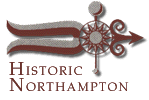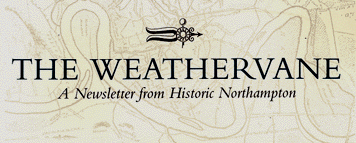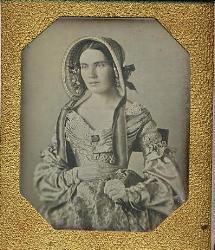

|


Weathervane Newsletter Fall 2002

Historic Northamptoneceives National Endowment for the Humanities Grant for Rare Photograph Collection
Bruce Cole, chairman of the National Endowment for the Humanities (NEH), announced Historic Northampton as a recipient of a grant to preserve and assess a collection of early daguerreotypes and photographs recently given to the museum. The $3,118 grant was one of 324 NEH grants nationwide totaling $20.6 million. "These NEH grants will broaden our awareness of the historical events, people and places that provide us with knowledge and wisdom," Chairman Cole said.
The grant will help preserve a remarkable collection of early photographs given to Historic Northampton by New York collector, Ralph Bova. The Bova collection consists of about 660 images, the vast majority being daguerreotypes (the earliest form of photograph) dating from 1841 to 1863. The collection is especially unique because the photographs were selected to document 19th century American dress.
The collection is important for anyone trying to date and understand specific items of clothing from a given historical period. This plays directly into the assets of the costume collection at Historic Northampton which is considered to be among the strongest in the northeast. "Historic Northampton is to be congratulated," said costume historian Nancy Rexford. "The Bova collection is important because the images show the entire ensemble -- how people put together the various items in their wardrobes." "Historical understanding is better served, continued Rexford, "by finding the similarities that link objects together in meaningful groups.
Historical, social, cultural meaning cannot be retrieved from a lone object removed from its context any more than a document is understood when only one word is translated. The object has meaning only within the particular environment within which it is 'uttered'. This environment consists of published rules of etiquette, accepted practice in a local community, and certainly of the range of garments the sitter had to choose from when he or she chose to wear these particular things. The Bova collection shines a bright light into the sartorial environment of mid nineteenth century America. It provides the context that is necessary before any one image, or any one surviving dress or bonnet, can tell its story."
Contents Historic Northampton.